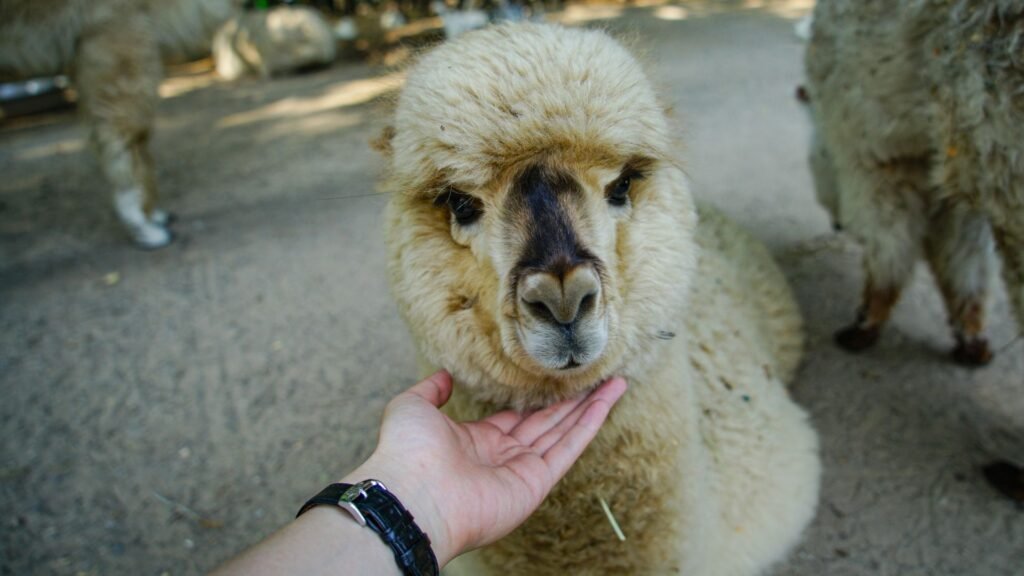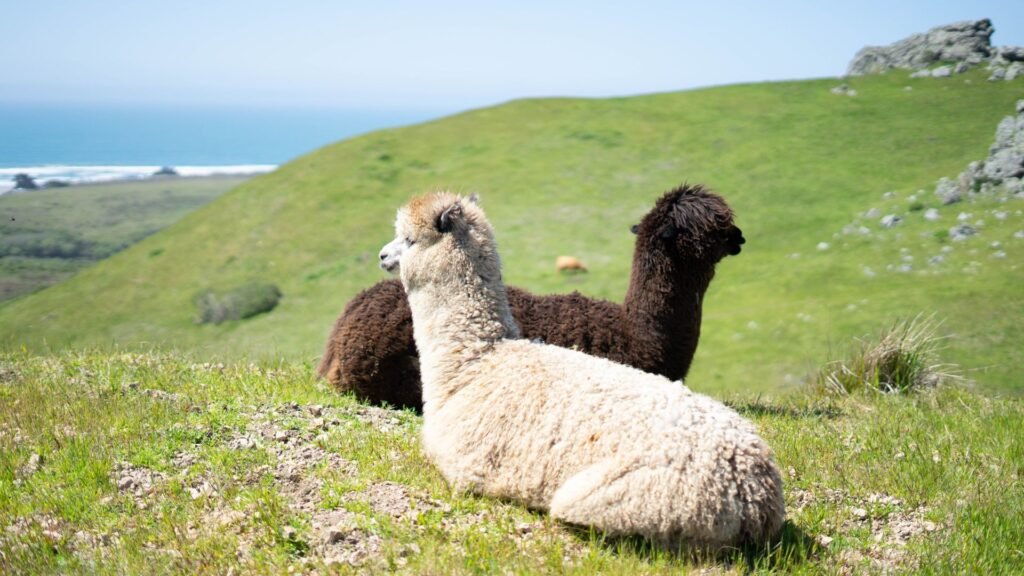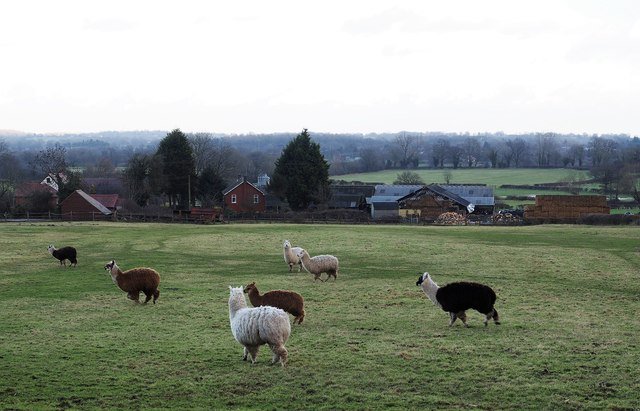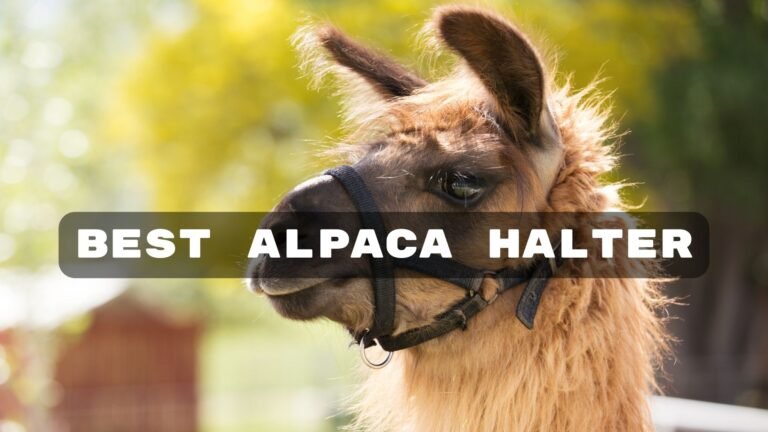Do Alpacas Climb? An Exploration of Their Unique Abilities
Ever found yourself wondering, “Do alpacas climb?” It’s a question that’s intrigued many, especially those with a keen interest in these fascinating creatures. Native to the high Andes Mountains of South America, alpacas are known for their adaptability and resilience.
But does this mean they’re adept climbers, scaling steep slopes with ease like their goat counterparts? Or are they more grounded animals, preferring to keep their hooves firmly on the flat grassy plains? Let’s delve into the world of alpacas and their climbing abilities or lack thereof.
Key Takeaways
- Alpacas, native to the Andes Mountains, have evolved to thrive in challenging environments with their unique ability to cope with high altitudes and extreme temperature variations.
- Unlike goats, alpacas don’t possess natural climbing abilities. Even though they can traverse hilly or uneven terrain, they usually steer clear of steep slopes or cliffs. Instead, alpacas are bred to be survivalists.
- Alpacas’ foot structure and body design inhibit them from efficient climbing. Their feet have two toes with a leathery bottom assisting flat terrain navigation, but hindering grip on rocky surfaces. Their weight distribution and center of gravity also contribute to their lack of climbing agility.
- Alpacas can manage gentle slopes and rolling hills but refrain from taking steep inclines. They are more inclined to navigate longer but safer routes than attempting to conquer challenging terrain.
- Alpacas are members of the camelid family, assuring they adapt and survive in diverse terrain types, but not necessarily skilled in climbing.
- Despite not being naturally adept at climbing, alpacas exhibit strengths in other areas, such as resilience, adaptability, and survival skills tailored to their native environments.
Alpacas in their Natural Habitat
When we think about the habitat of alpacas chronologically we can’t ignore the fact that they hail from the high regions of the Andes Mountains, in South America. This type of terrain is mainly characterized by slopes and rocky surfaces more than flat plains. Through the ages, alpacas have shown a unique adaptability to this terrain, making it their playground.

So, what does their daily terrain look like? It includes steep mountainous regions, rocky terrains, and grazing grounds that are not conventionally flat. But it’s important to remember that modern-day alpacas, unlike their ancestors, are predominantly domesticated. These “contemporary” alpacas, in many parts of the world, are mostly found in pastures; flat grounds where food is plenty – a stark contrast to their ancestral abode.
It’s interesting to note that alpacas are natural pros at coping with altitude. These animals, naturally accustomed to living at heights, can thrive in areas above 4,000 meters. Their unique physiology enables them to survive and even excel in high-altitude habitats. This includes:
- A greater capacity for blood oxygen saturation, which aids in coping with thin air.
- Tolerating extreme variations in temperature; both cold nights and hot days.
Considering the environment in which they evolved and lived for centuries, alpacas are quite sturdy and adaptable, able to survive in challenging conditions. But do they climb like goats? Not quite. Alpacas and goats are starkly different. Goats are known for their agility and alacrity with which they climb steep mountains and cliffs.

Alpacas, on the other hand, aren’t natural climbers. While they may traverse hilly or uneven terrain, they don’t display the same knack for vertical ascents and agile navigation of cliffs that goats are known for. They are instead natural survivors in harsh conditions and environments, their sturdy and resilient nature demonstrating more survivalist attitudes than acrobatic skills.
While the question of alpacas being skilled climbers remains somewhat a gray area the next section will certainly shed more light on this interesting topic.
Do Alpacas Have Climbing Abilities?
Understanding full well the terrain of alpacas’ ancestral Andean mountains, I can affirm alpacas are not natural-born climbers. Their counterparts, goats, are often highlighted for their astounding dexterity and agility on rocky cliffs, but alpacas are different.
Alpacas are unique – adaptable but not acrobatic. These creatures are built to endure, not to perform stunts on precipitous slopes. Knowing how they fare on uneven terrain is crucial to their care and habitat design.
Alpaca Physiology and Terrain Adaptability
Exploring alpacas’ physiological traits gives us a clue about their aptitude for climbing. Alpacas have two toes on each foot with a leathery bottom, similar to a cow’s foot, not a split hoof like that of a goat. The less divided, flatter structure of an alpaca’s foot limits their ability to grip and navigate rocky surfaces effectively, hindering their vertical climbing ability. Their body structure also plays a big part. Alpacas have a weight distribution and center of gravity distinctively different from that of a mountain goat. Their long, lanky body and neck designed more for survival in harsh climates, do not assist them in scaling up steep or tight spaces.
Alpacas and Inclined Surfaces
The tendency to stroll uphill or traverse through slightly undulating pastureland doesn’t necessarily make alpacas climbers. Alpacas can manage gentle slopes and rolling hills; however, they’ll shy away from rocky outcrops and steep cliffs. Unlike goats, who will face a challenge head-on and scale a near-vertical mountain side, alpacas would rather take the long way around than attempt to conquer an incline.
Alpacas’ adaptability and survival instincts aren’t to be undervalued. While they’re not adept climbers, I admire their resilience and unique skills honed to thrive in a diverse range of habitats.
Physical Characteristics for Climbing
Let’s dive a little deeper into exactly why alpacas aren’t nature’s best climbers. It’s all down to their physical characteristics. They have a unique set of features that give them some advantages on certain types of terrain, but these same traits can be restrictive when it comes to more challenging landscapes.
One of the most evident limiting traits of alpacas is their foot structure. Unlike their mountain-climbing cousins, the goats, who have specially adapted hooves that grip rocky surfaces, alpacas have two-toed feet. This foot design works well for traversing grassy plains and gentle slopes but poses a challenge for scaling rough, rocky terrains.
Another conspicuous characteristic influencing their climbing ability is their weight distribution. Alpacas are larger and heavier than their climber counterparts in the animal kingdom. For instance, the average weight of an adult alpaca ranges from 122 to 143 pounds (55 to 65 kg). This significant body mass, coupled with their height—between 34 and 36 inches (86 to 91 cm) tall at the shoulder—makes their center of gravity less stable over uneven, steep ground.

Yet, it’s not all inhibiting news for these charismatic creatures. Alpacas are of camelid family, meaning they are acclimatized to survive in different terrain conditions. They are extremely adaptable and resilient, traits that serve them well in their natural habitats but don’t necessarily translate into climbing prowess.
Although alpacas lack the natural built of a mountain climber, remember that climbing isn’t the only gauge of adaptability in the animal kingdom. Armed with our understanding of their physical characteristics, it’s clear that alpacas have other strengths that make them perfectly suitable for their native environments.
Watch them gracefully deal with slopes and rolling hills and you’ll see that while alpacas may not be the world’s greatest climbers, they indeed shine in their unique way. They have mastered their preferred terrains and that, surely, is a gold-medal-worthy achievement of its own.
The Reality: Alpacas as Grounded Animals
Let’s delve into the fascinating world of these creatures. Alpacas are predominantly grounded animals. This is not just to say that they physically stay close to the ground. In essence, their entire biology and behavior reflect this grounding.
The natural habitat of an alpaca is grassy plains and gentle slopes, where it’s easy for them to navigate and find food. Their two-toed feet equipped with tough pads work best on forgiving terrains. You won’t find any retractable claws or opposable digits on an alpaca foot. Neither will you find the sort of rough, keratinised hooves that enable goats to scale mountains. Instead, what you’ll find are perfectly adapted tools for trekking across flat, soft terrain, with little need for vertical climbing.
Moreover, alpacas are sizable animals, with a weight generally falling between 100 and 200 pounds. The size and weight not only make their climbing affairs more challenging; they also influence the center of gravity, making it less stable over uneven, steep ground.
Their physiology doesn’t lend them to intricate balancing acts seen in some mountain-dwelling species. Picture them trying to ascend a sheer cliff face, and it’s clear that they’re not built for such endeavors.
Yet, this doesn’t make alpacas any less impressive. These animals are exceptional in their own ways. They’re resilient and hardy, thriving in various environments, enduring harsh weather, and fending off predators. Alpacas are quintessentially survivors, masters of making the most out of what nature has given them. And what nature has given them is a body for stability, not for climbing.
It’s exciting to think about ways animals have adapted to survive in their environments. In the case of alpacas, they are not climbing experts — their strength lies elsewhere, in their adaptability and resilience on the ground — the environment they have been honed for by nature throughout evolution.








Our picks
Alpaca & Wool Felted Sole Inserts: Comfy Upgrade?
Best Alpaca Socks for Hiking: Ultimate Comfort and Durability on Trails
Best Alpaca Halter for Comfort and Control